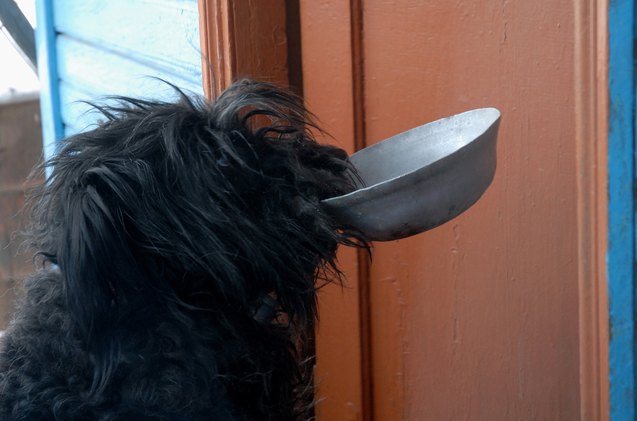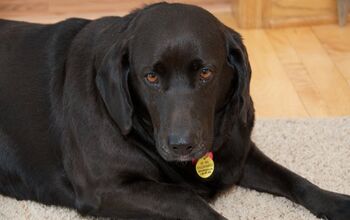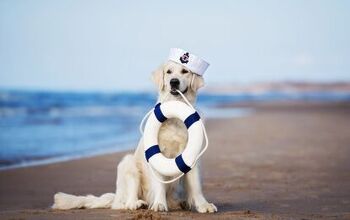How To Use a Dog Food Calculator

Did you know that you can calculate the amount of calories your dog eats per meal? Regulate your dog’s caloric intake carefully with help from a dog food calculator.
Like humans, dogs require a certain number of calories on a daily basis in order to support their healthy metabolism. Your dog’s body burns calories all day long just to support important biological processes like respiration, digestion, and growth – if your dog doesn’t get the calories he needs, he could experience serious nutritional deficiencies and stunted growth. To help you figure out how many calories your dog should be getting on a daily basis, consider using a dog food calculator.
Calculating Your Dog’s Calorie Needs
As you may already know, all living things require calories as a unit of energy to support life. In the same way that the human body has a minimum daily calorie requirement (called the basal metabolic rate, or MBR), your dog also has a minimum number of calories he needs to support his metabolism. This minimum number of calories for dogs is called the “Resting Energy Requirement” or RER. This number varies from one dog to another based on the age, sex, weight, and activity level. To give you an idea what your dog’s RER might look like, consider the following formula:
RER = 70 x (dog’s body weight in kg)^0.75
For example, if your dog weighs 22 pounds you would first convert that number to kilograms and get a body weight of 10kg. Next, you would multiply that number to the ¾ power and then multiply the total by 70. The RER of a 22-pound dog is about 400 calories per day. Remember, however, that this number is a minimum – it only accounts for the calories needed to support basic physiologic functions. To determine how many total calories your dog actually needs you must multiply his RER by an activity factor which varies depending on your dog’s age and activity level.
Related: What Does “Human Grade” Mean When it Comes to Dog Food?
How to Use a Dog Food Calculator
If you want to calculate your dog’s total daily energy requirements, the easiest thing to do is to use an online dog food calculator. To use this kind of calculator, all you have to do is input your dog’s weight and it will calculate his Resting Energy Requirement. Some dog food calculators will also give you the option to calculate your dog’s total energy needs by multiplying his RER by a certain factor based on his age and activity level. Here is a breakdown of the factors affecting your dog’s RER and the number most dog food calculators use to determine total daily calorie needs:
Altered (neutered or spayed) adult dog = RER x 1.6
Intact adult dog = RER x 1.8
Active, working dog = RER x 2.0 – 5.0
Inactive/obese dog = RER x 1.2 – 1.4
Puppy 0-4 months = RER x 3.0
Puppy 4-12 months = RER x 2.0
Related: How Many Times A Day Should I Feed My Dog?
Some dog food calculators do more than just provide your dog’s total daily calorie needs. For example, the Dog Food Advisor dog food calculator allows you to input your dog’s ideal body weight and activity level in order to determine how much your dog should eat per day to achieve that ideal weight. Remember, different dog foods have different calorie content so you will still need to do some calculations of your own to determine exactly how much food your dog needs to meet his daily calorie needs. You will find the calorie content on the dog food label, typically included in the guaranteed analysis.
All dogs require a careful balance of nutrients in order to sustain healthy biological function. What many dog owners do not realize, however, is that their dog’s calorie needs might differ greatly from those of another dog. If you really want to make sure that your dog is getting the calories he needs, consider using a dog food calculator to find out.
Why Pay Attention to Your Dog’s Caloric Intake?
Just like with people, the calories that your dog eats daily will have a direct impact on his weight and, therefore, his health and well-being. Of course, there are other factors that factor into this, but your dog’s diet is a major consideration. By understanding the calories that your dog will need to maintain a healthy weight, you can make smart choices in terms of what you are feeding your dog. This includes selecting the right dog food, determining how much he should be fed with each meal, and incorporating any treats and snacks.
Dangers of Obesity in Dogs
A surprisingly high number of dogs meet the threshold for being considered overweight (10-20% above their ideal weight) or obese (more than 20% above their ideal weight). It’s estimated that approximately 25-30% of dogs are obese, with that number rising to 40-45% after 5 years of age.
One of the most common reasons for weight gain in dogs is simply eating too much. This often happens when dog owners fail to consider the treats or food scraps that they are offering their dog in between meals. Every little snack adds up! Not only does this lead to a chubby appearance, but obesity also carries many serious health complications for your dog.
Healthy complications associated with obesity or excessive weight gain include an increased risk of:
· Heart disease
· Hypertension
· Diabetes
· Osteoarthritis
· Urinary bladder stones
· Several types of cancer
In addition to these problems, dogs that carry extra weight often experience a higher rate of joint pain. This is from the ongoing pressure of carrying around the weight on a daily basis. This is especially hard on dogs who are prone to conditions like hip and elbow dysplasia. If you notice that your dog’s body shape is starting to slip into the higher end of the body condition scoring chart, it’s time to reconsider how much you are feeding your dog as well as how physically active your dog is.
Dangers of Being Underweight
While most dog owners are aware that there is a concern if their dog gains too much weight, what if your dog’s weight starts to drop? After you have calculated your dog’s daily calorie needs, take a close look at the recommended serving size of the food you have chosen. You should also look at the quality of your dog’s food to ensure that their nutritional needs are being met within that serving size.
A drop in weight could be the result of not feeding your dog enough of your chosen food or that the food isn’t providing everything that he needs. If the food quality is in question, try switching to a higher-quality, WSAVA-compliant dog food.
If you are providing your dog with the right amount of food and his weight is still low, you should contact your veterinarian. There may be an underlying health complication that is preventing his body from being able to absorb nutrients from the food that he is being given.

Kate Barrington is the loving owner of two cats (Bagel and Munchkin) and a noisy herd of guinea pigs. Having grown up with golden retrievers, Kate has a great deal of experience with dogs but labels herself a lover of all pets. Having received a Bachelor's degree in English, Kate has combined her love for pets and her passion for writing to create her own freelance writing business, specializing in the pet niche.
More by Kate Barrington























